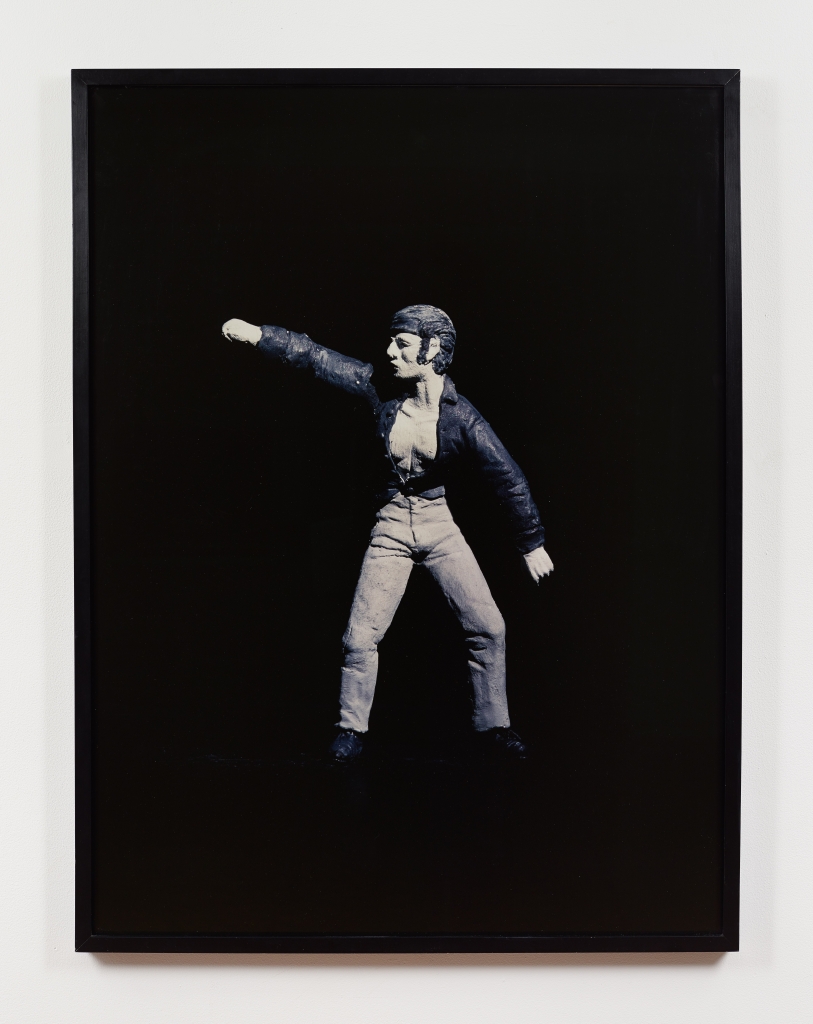Ellen Brooks
Photographs and Tableau Reliefs from the Early 1980s
October 3 - November 8, 2013
Andrew Roth is pleased to present “Photographs and Tableau Reliefs from the Early 1980s,” a solo exhibition by Ellen Brooks. Fifteen small sculptural reliefs will be exhibited for the first time, along with several early four-by-five-inch Polaroids and large-scale Chromogenic prints.
As a graduate student in the early 1970s at UCLA studying under Robert Heinecken, Brooks was particularly affected by Heinecken’s provocative photographic notion that no matter what a photograph may be of, “when the shutter is released, an abstraction is made.” For Brooks, the abstraction inherent in the interplay between the image and the viewer’s psychological projection onto that image — the set of assumptions and beliefs brought to bear on a given representation — has been an abiding concern. This understanding of the fraught psychology of the viewer-image relationship was common to the Pictures Generation artists of the mid to late 1970s, who appropriated the visual tropes of popular culture — as well as mass-media images themselves, often marked by strong representations of gender, class, and race — and served those very projections back to the viewer in sharp relief.
Within this historical context, Brooks embarked on a series of color photographs for which she is best known, depicting tableaux of miniature figures in various interior settings that seem to invite dramatic interpretation. In one, a couple sits on a couch, averting their eyes; in another, a woman waits alone at a table in a dark room, a square of light from the doorway revealing the ominous shadow of a figure about to enter. This allusion to lurid narrative within hothouse domestic environments has a particularly small-screen sensibility; Brooks herself had a sustained, unusual engagement with such pop-cultural psychodrama, noting, “In graduate school, I used to have a TV with a broken picture tube in my apartment. Working there during the day, I would listen to the soap operas without the picture for hours, creating the scenes in my head.”
This investment in the charged world of quotidian human emotion took a sculptural turn in Brooks’s work in the early 1980s, when the artist — who has moved fluidly between media — created tableaux not to photograph but to stand alone as wall reliefs. Presented here for the first time, these series, utilizing either hand-painted miniatures on plaster grounds or cast-bronze figures on lead grounds, involve tiny figurines originally manufactured for use in HO-gauge model train sets. Rendered in grisaille or cast in metal, these figures are arranged on monochrome textured backgrounds in various states of alienation, often separated by quasi-architectural ledges or partitions that jut up from the ground on which they rest. The looks (or lack thereof) between the figures speak volumes: Full of the unsaid and the unseen, they literalize the sense of entrapment present in the photographic work. Alluding to the tension between genders and within the family unit, they crackle with psychological force, inviting the voyeuristic pleasure of beholding mute, private dramas.
Ellen Brooks was born in Los Angeles and lives and works in New York. Her work has been exhibited at the Museum of Modern Art, the New Museum of Contemporary Art, the Museum of Contemporary Art, Los Angeles, and the Whitney Museum of American Art, among many others.













